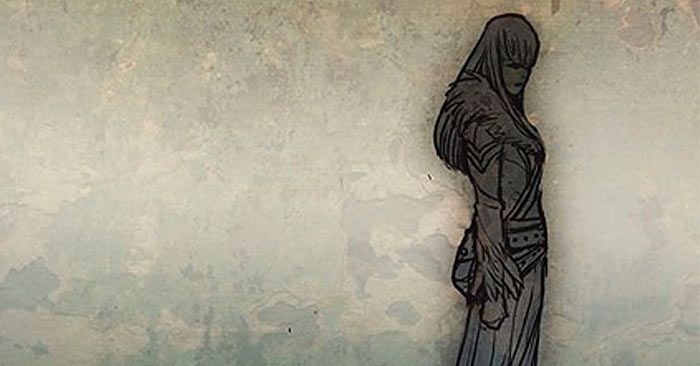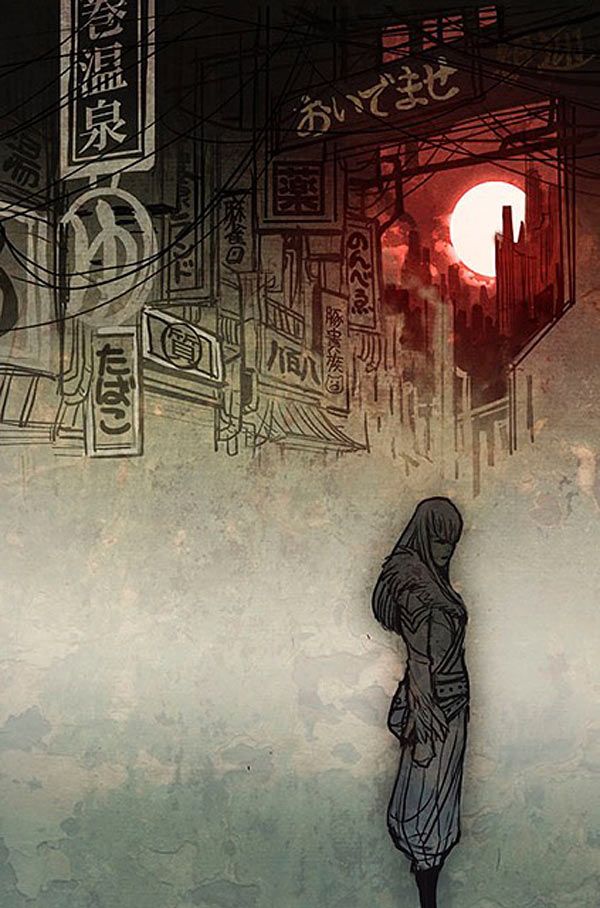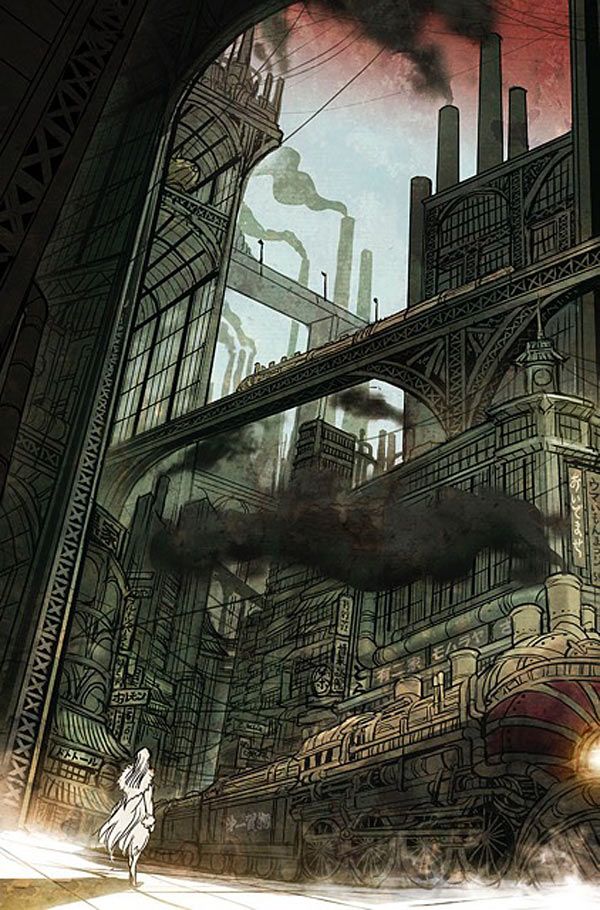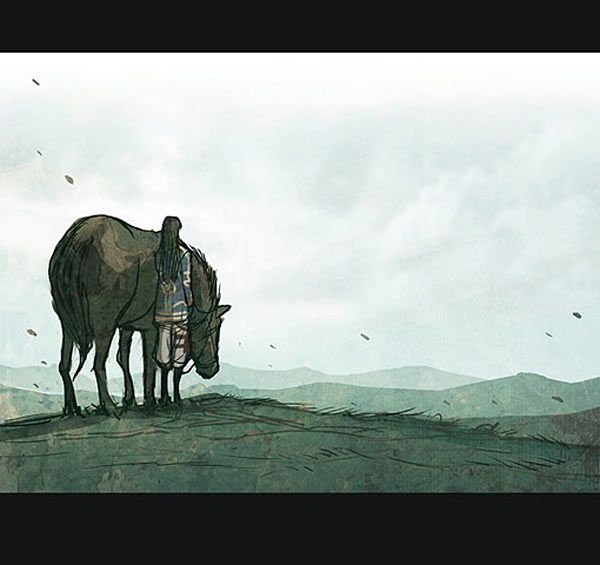Following the announcement of her upcoming series with Sana Takeda, writer Marjorie Liu joined a press conference at 2015's Image Expo to share more about her upcoming supernatural adventure, "Monstress."
Set in early-1900s Asia, the summer-launching series follows a young girl named Mika who has forged a psychic bond with one of the powerful monsters that freely roam the Earth. This relationship begins to alter both of them while attracting attentions of authorities that seek to control her and the monster.
RELATED: Snyder, Liu, DeConnick Talk Crafting Stories
Liu -- who said that she hopes this will not be her only Image Comics-based project -- elaborated on the historical period that combined with her personal love of monsters to inspire the story. Plus, she explained what it takes to transform her young protagonist into a warrior, a challenge she says is faced by young women, every day.

On the origins of and inspirations behind "Monstress"
Marjorie Liu: I wanted to write about the idea of women and power and monstrousness. Also, I wanted to tell a story that was set in Asia. Asia prior to World War 2 was very much a place where all the world converged. The United States, Europe, Russian immigrants, Jewish immigrants -- they were all converging on Shanghai. We always talk about how the 1920s was all about Paris, but it was also about Shanghai. So I wanted to tell a story that explored this region, except with a supernatural bend. Of course, those were only two pieces and I didn't know how to connect them.
I was visiting Japan and I went to Toho Studios. In front of Toho Studios, there is a giant statue of Godzilla and I saw it and squealed and ran over to start posing with it. I was like, "Yeah! Godzilla! My new boyfriend." And all of a sudden I thought, wow, wouldn't it be cool if Godzilla was my friend? And that was the lynchpin between these two very tenuous ideas of telling a story about girls in power and telling a story set in Asia. I thought, what if the world was populated with these otherworldly creatures that are sometimes made of flesh, sometimes made of spirit, sometimes both, and they carry with them immense power that no one really understands, like forces of nature. And then there's a girl, an outcast, someone of mixed race, someone who is a refugee from a World War 1 battle in Europe, and what if she develops a psychic bond with these things? What happens? So that's the long, rambling origin of the story.
Why Image?

Why not? Image affords me as a creator a tremendous amount of freedom. That's what I was craving. I wanted to tell a story that was in my heart, no matter how weird or strange it might be -- and it will probably get very weird and very strange. I felt like Image was the perfect place for that. I feel like Image as a publishing company nurtures creators and allows them to do weird and wonderful things that wouldn't be acceptable anywhere else. That's the perfect home for me.
Is the experience of writing about a young woman fighting not to have her power taken away something close to your heart?

So much so. Listen, we have millions and millions of stories about men and power and masculinity and power. But we don't have that many stories for women. Every day, girls are forced to fight -- forced to fight to be heard, to be seen, to make space for themselves and society is always trying to deny girls these things.
In many ways, I feel like every day growing up in this world, you have to be a warrior. It's the natural state. One must marshal their strength in order to be seen and heard and make space for themselves as women in this world. This is a story where people are trying to take that power, they're trying to take the connection she has with this otherworldly being -- it feels very familiar to me and it doesn't feel like much of a stretch. In the same vein, it's a story about a young woman becoming a warrior. It's about the journey of a young woman, a girl, learning to find herself in this world and protect her strength, her space and her voice.
What made you think of Sana for this series?

As if I had to think about it! I worked with Sana before, on "X-23," and she just brought the character to life in ways that took my breath away. Working with her was always such a joy. I'd write the story and hand her the script, and what would come back would be amazing. Not just amazing visually, but amazing in the ways she developed the story visually. She was my first and only choice for this. I went to Japan four times last year, I'm going again in February -- every time I'm there I see her. We talk, hang out, have lunch and I knew that she was going to be free. And I was like, okay! I didn't pounce on her and drag her home with me, but I made a mental note and started developing the story. When the time came, I sent her an email with the outline and crossed my fingers that she'd say yes, and she did. And I did backflips.
Is there a creative shorthand between the two of you?

The shorthand is, I write the story and set her loose. I don't question, because I know that whatever she gives me will be beautiful. If I feel like there's specificity, I mark it in the script, but more or less, I just hand her things and she makes magic with them.
Has the art she's given you influenced the direction you take the story?

Absolutely. Everything. Some of the art you saw today influenced me. That's the beautiful thing about working with someone so talented. I find myself constantly inspired, surprised and energized to go deeper in the story and take it in ways I'd never imagined.
Can you tell us about your favorite monster in the series?
Oh, man, I have two favorites. One I won't talk about yet, because we're still developing him. But the one you've seen, the one that belongs to the heroine Mika, that particular monster is my favorite. He's the most powerful of them all, but he's kind of weird. If a monster could be weird, he's weird. Although he has this tremendous power and he's dangerous, he also has a streak of curiosity in him. Being bonded to this girl is going to alter him as much as it alters her. Part of the reason why that can happen is because he has this curiosity that allows him to accept change, perhaps in ways other monsters do not.





